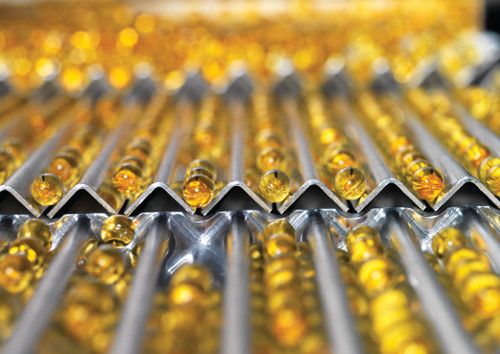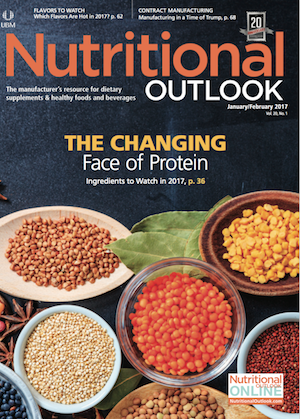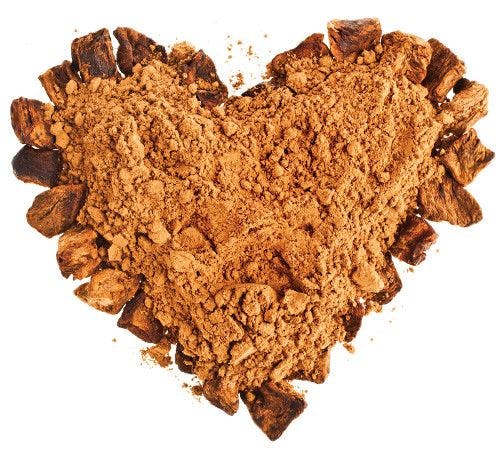2017 Dietary Supplement Equipment Manufacturing Update
The latest innovations in supplement equipment allow for faster and more efficient production.


Despite the breadth and diversity of the dietary supplements industry, there’s one area that impacts just about every class of ingredients: the equipment used to process raw material and create finished supplement products. Sure, there are specialized machines tailored to the different types of supplement products, but the demand for faster production speeds, efficiency, and durability is universal across equipment for tablets, softgels, capsules, and more.
From capsule fillers to dedusters, here are a few of the latest equipment launches that look to further streamline supplement production.
Dust-Tight Upgrade on PharmaFlex iSeries Dedusters
Maintaining a clean production space is an essential aspect of tablet production, and Pharma Technology Inc. (Piscataway, NJ) has recently released enhanced features for its PharmaFlex iSeries dedusters designed to do just that. The iSeries dedusters, which include wash-in-place/wash-off-line capabilities, now come standard with dust-tight, level-3 occupation exposure banding (OEB) on all machines. The new feature allows for tablets to be transferred from the press chute into the deduster via completely dust-tight connections.
Once in the PharmaFlex iSeries machine, the tablets travel vertically along a deduster spiral made of highly resistant Tritan polymer segments, which “both dedust and contain the product in place,” explains Nic Michel, general manager of North America for Pharma Technology. The spiral segments are also transparent, allowing for easy viewing of the dedusting process.
Compared to traditional stainless-steel spiral dedusters, the PharmFlex iSeries removes up to 40% more dust through dust extraction around the circumference of the spiral, and with the help of a compressed air jet that blows radially outward from the center of the spiral.
“The compressed air jet helps flip tablets from one side to the other for even dedusting, and helps remove residual powder and push it towards the dust extraction on the first revolutions of the spiral,” Michel explains. He adds that the PharmaFlex iSeries can also run for much longer than traditional stainless-steel spiral dedusters without downtime, making them a more efficient option.
The new dust-tight level-3 OEB component, as well as other newly streamlined features, can be incorporated into both new and existing PharmaFlex iSeries units. The mounting of these features on new built-in iSeries units can also be completed in less than three months, the firm says, and even less time is required to retrofit existing iSeries dedusters.
FEC40 Capsule Filler
Turning now to capsule production, Fette Compacting America (Rockaway, NJ) recently debuted a machine that it says is the world’s fastest capsule filler. The new FEC40 capsule filler offers an output volume of up to 400,000 capsules per hour, which the firm says is nearly twice that offered by any other capsule filler on the market.
The FEC40 actually operates at about the same operating speed as is standard across the industry-140 strokes per minute, according to Matt Bundenthal, communications manager for Fette Compacting America. The machine’s impressive production capacity comes from its two-pronged production system.
“Its output capabilities are more the result of the fact that it’s the first-ever double-sided capsule filler, resting on Fette Compacting’s Duplex Concept,” Bundenthal explains. “Every sub-process contributing to the production of finished capsules is multiplied by two within the machine.”
In addition to its high capsule yield per hour, the FEC40 can also be attached to two tamping-pin stations or up to four pellet-filling stations-all of which can be removed from the machine in a “matter of mere minutes,” Bundenthal says. The capsule filler also allows for 29 “separate and intelligent” drive assemblies which can be de-coupled from each other, offering the ability for increased customization. Finally, the machine’s small footprint makes it easy to reconfigure equipment without sacrificing additional floor space, Fette explains.
New Feeder Design for NP-400Tablet Press
Last summer, Natoli Engineering Company (St. Charles, MO) released a new feeder design system for its NP-400 rotary tablet press that “assists with powder flowability, which ultimately increases product yields,” says Doug Kirsch, technical service manager for Natoli’s tablet press division. The new, high-efficiency paddle feeder features variable paddle speed, paddle design options, bulk powder recirculation, and customized fill cams-all of which are designed to improve operator control over the die-filling process and ensure better yields during tableting.
The NP-400, which began shipping in 2015, also comes with a near-infrared spectroscopy system to detect tablets that do not fall within the specification system. It can produce up to 180,000 tablets per hour. The machine’s product-yield technology returns excess powder to the feeding system, thereby reducing the amount of wasted material.
Kirsch adds that one of the biggest trends Natoli is seeing from customers lately is a demand for reduced downtime of equipment, whether it be due to setup, cleaning, or maintenance. Tablet-press manufacturers such as Natoli address this demand by offering wash-in-place components, removeable turrets, and automatic lubrication. Natoli’s automated lubrication system covers the tooling of the equipment, as well as the cams and drive-train, he says.
“Proper lubrication is critical to extending the life of a tablet press, and our automated system ensures reduced downtime due to maintenance,” Kirsch says.
Added Features on Charles Ross Ribbon Blenders
If it’s blending you’re after, and specifically rapid blending of dry powders, pellets, granules, paste-like materials, solid-liquid suspensions, and/or other solid forms, then the newly available features on ribbon blenders from Charles Ross & Son Company (Hauppauge, NY) may be just the thing for you. In the name of enhanced precision and efficiency, the firm announced in December its ribbon blenders, such as the 42N-120SS pictured below, would now be available with several added features.
The new optional features include a solid agitator shaft with angled leading edges to prevent material build-up, air-purged mechanical shaft seals with replaceable Teflon seal faces, clear-view polycarbonate on the cover and shaft guards, pneumatically operated disc valve, and scrapers welded to the blender’s spokes and ribbons, which ensure a 1/8-inch close tolerance to the blender’s end walls.
“The available features on Ross ribbon blenders, such as leading edges on the ribbons, end-wall scrapers, radiused trough corners, and spherical disc valves, all help to reduce dead space where material might collect,” says Christine Banaszek, application engineer for Charles Ross. Aside from increasing blending efficiency, reducing dead space also helps to prevent ingredient material from being wasted, Banaszek adds.
Also read:
Dietary Supplement Production Challenges, Equipment Solutions
Bringing Nutraceutical Manufacturing In-House? Here Are Your Options for Equipment Purchasing
Equipment for Controlling Food Contamination

Prinova acquires Aplinova to further increase its footprint in Latin America
April 7th 2025Prinova has recently announced the acquisition of Brazilian ingredients distributor Aplinova, which is a provider of specialty ingredients for a range of market segments that include food, beverage, supplements, and personal care.

























